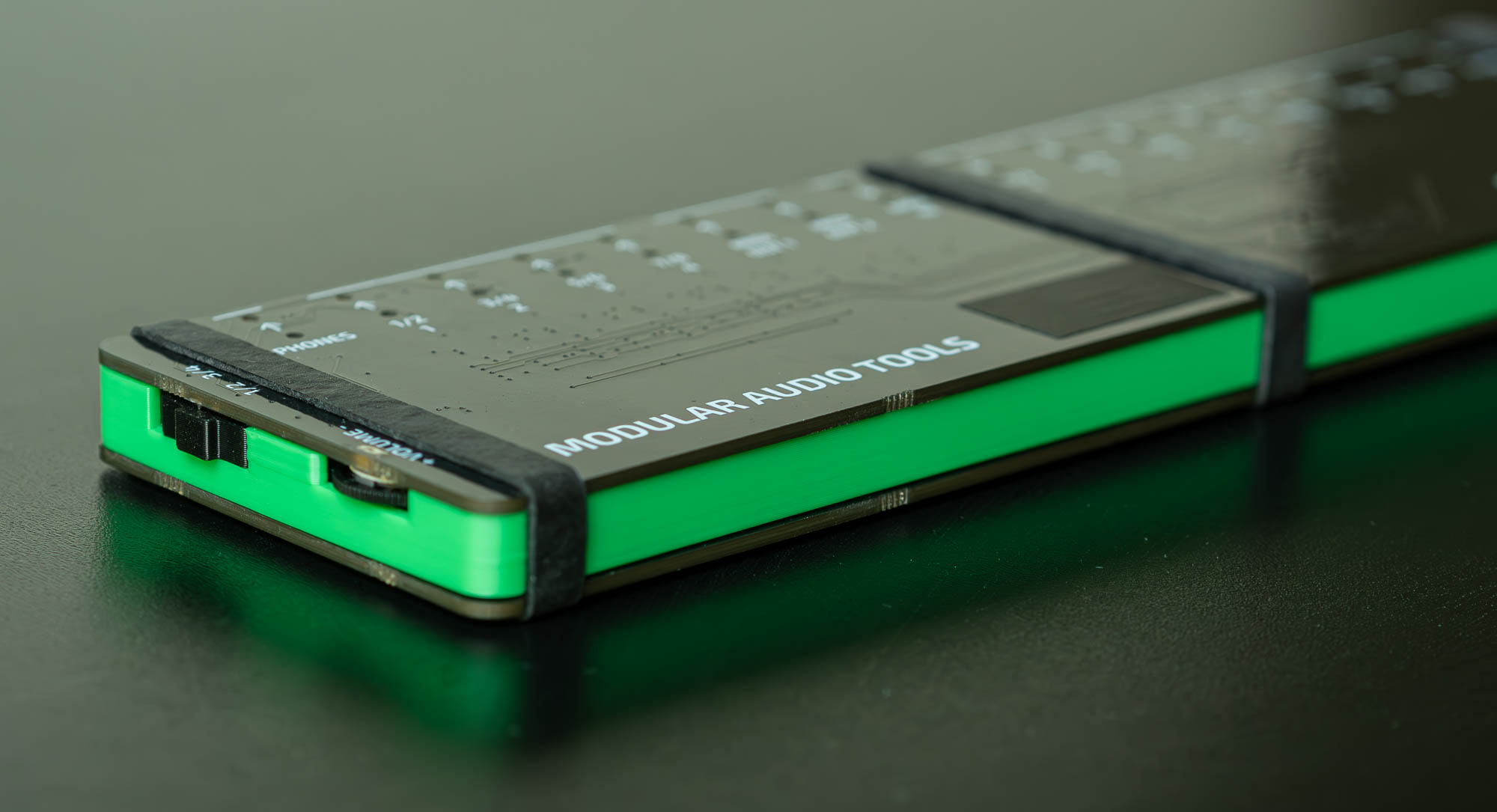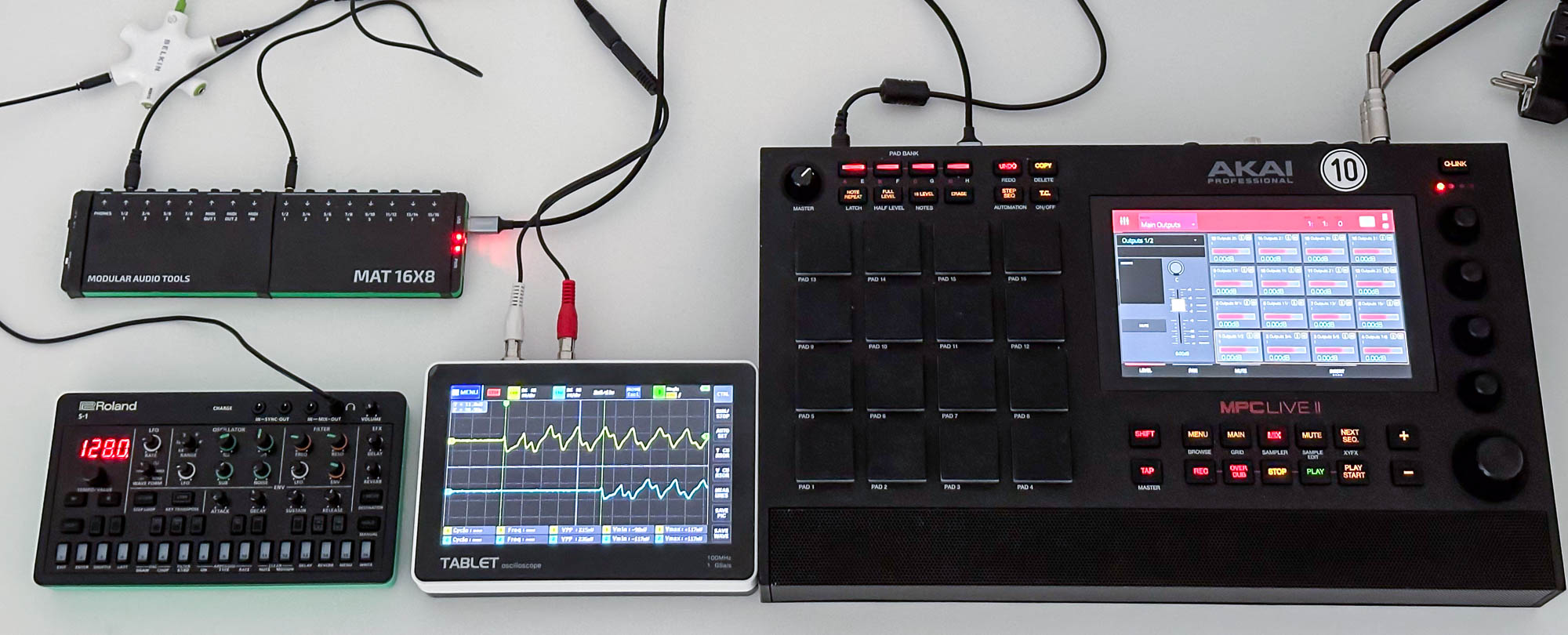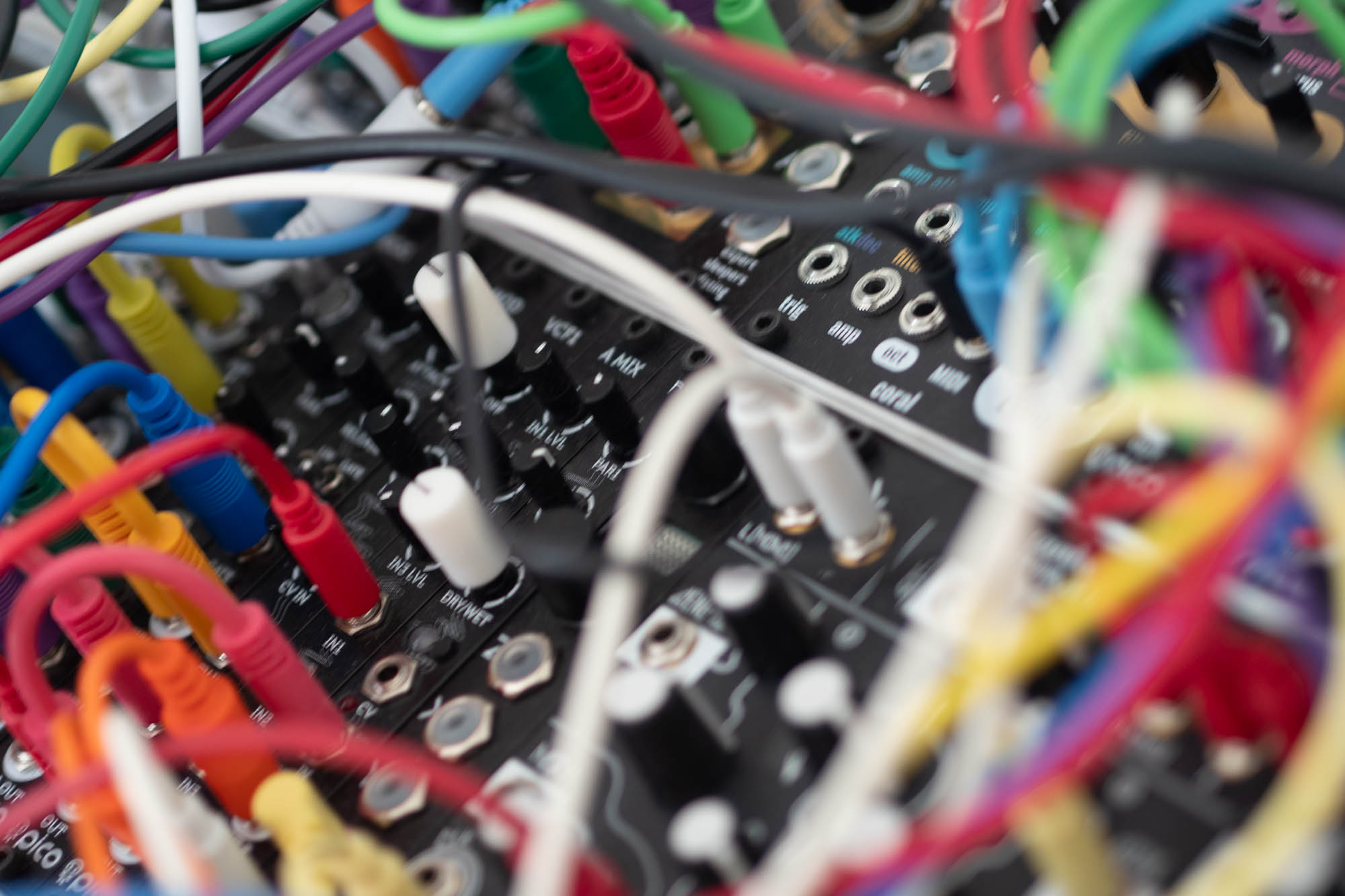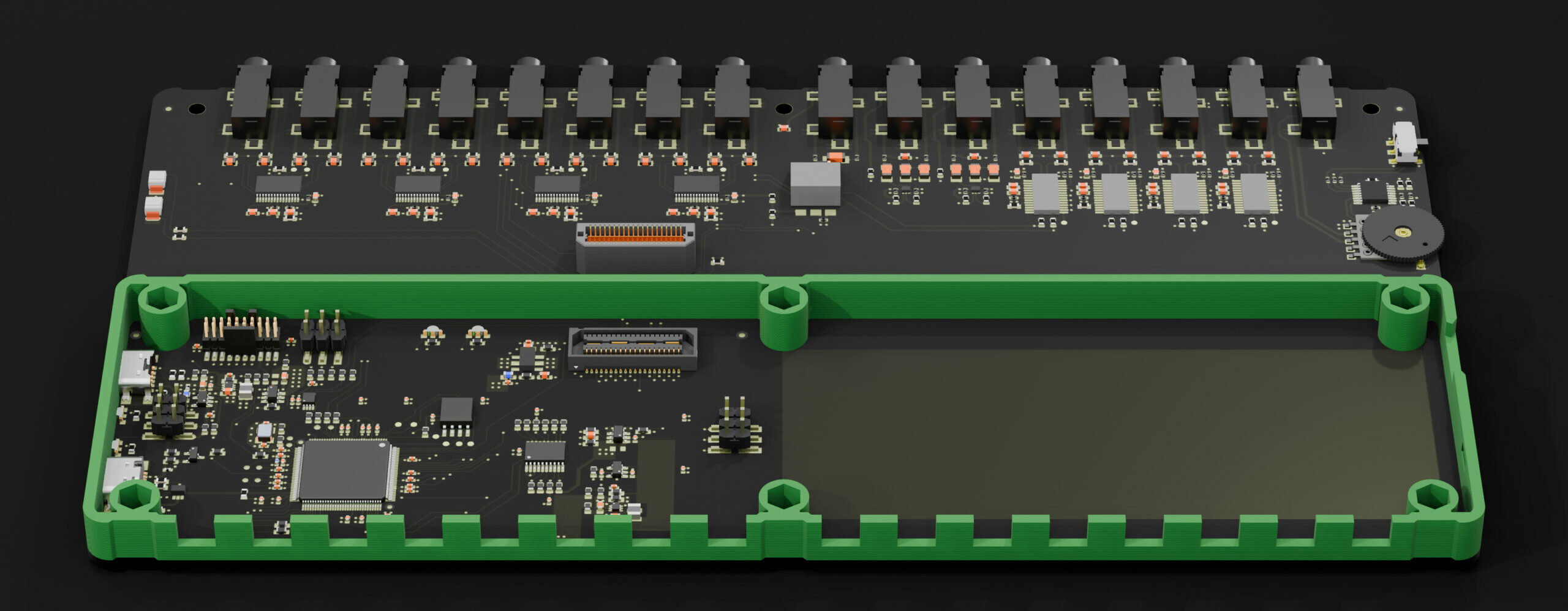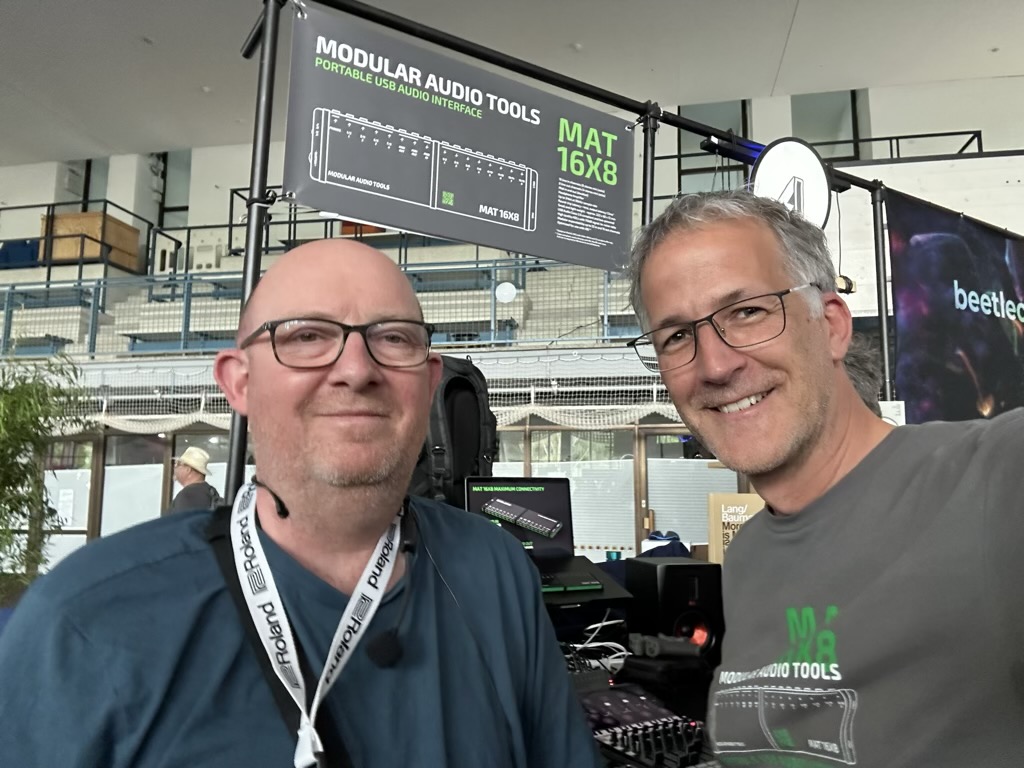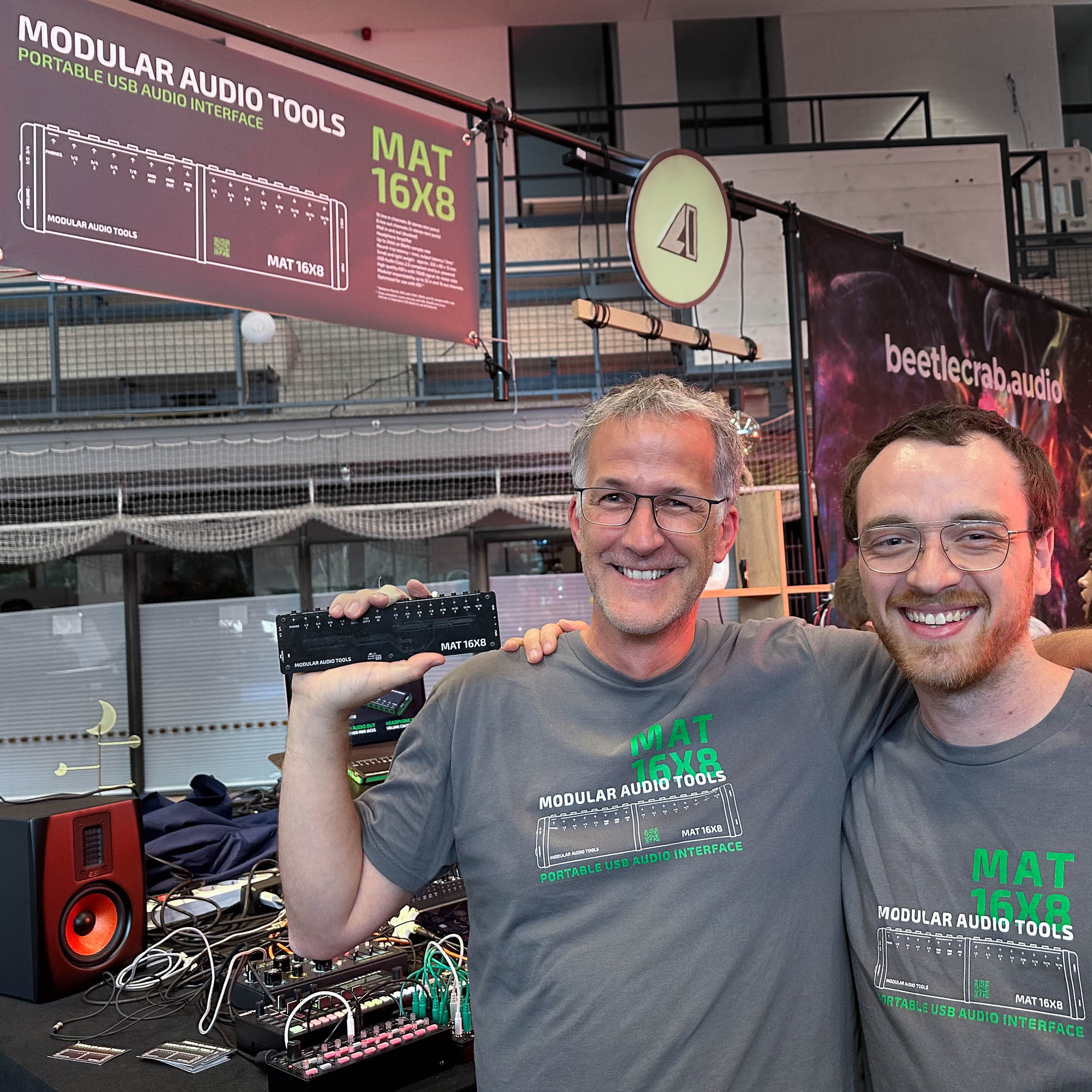MAT 16X8
World’s most portable 16X8 channel audio interface.
- 16 in channels (8 stereo mini jacks).
- 8 out channels (4 stereo mini jacks).
- 24bit resolution.
- Up to 96kHz sampling rate.
- Latency down to 3.7 ms round trip*. 1ms input and 1.5ms output.
- USB Audio Class 2.0 compliant.
- TRS-A Midi in and out (doubled).
- Bus powered.
- High quality ADCs with 110dB signal to noise ratio.
- Very low noise floor (Direct in, no preamps).
- Headphone amp. Pre-listening to ch 1/2 or 3/4.
- High quality mini jacks.
- Small and lightweight: 222 x 60 x 11 mm.
- Expandable to 32 in and 24 out channels with an additional board**.
- Optimized for usage with iDevices.
- Works with iOS, Linux, MacOS and Windows***.
* Tested on iPad Air (M1) with 24bit, 96kHz sampling rate and 32 sample buffer size
** Due to bandwidth limitations of USB 2.0, the maximum sampling rate will be 48kHz.
*** To use all features, an ASIO driver for Windows needs to be installed.
As this device is currently still a prototype, some specifications and features could still change.
Get informed when available:
We assure you that we will not pass on your e-mail address to third parties and will only use it to send you information from Modular Audio Tools and only send you occasional e-mails to keep you up to date. You can easily unsubscribe at any time via a link in the email.
MAT 16X8 Details
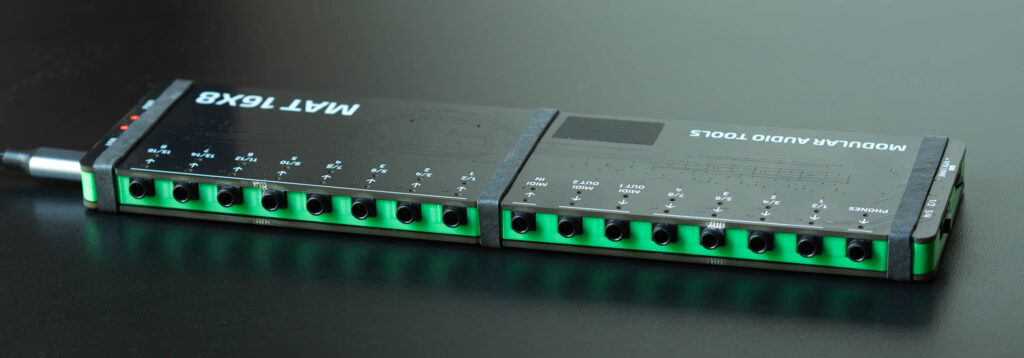
Consistently designed for mobile use on small live sessions with hardware synths, drum computers, modular systems and external effects units. In conjunction with an iPad* and hardware controller, the combination becomes an easily transportable, highly flexible performance mixer with effects chain and complex routing options. Always perfectly tailored to the requirements of the respective setup.
* The interface is suitable for all Audio Class 2.0 compatible computers and devices and works directly with iOS (tablets and phones), MacOS and compatible Linux systems. To be able to use all features, a driver must be installed for Windows.
Current fully functional prototype of the MAT 16X8
Converters
With 24bit resolution at 96kHz, less than 4ms roundtrip latency (tested with an iPad Air M1) and converters with 110dB dynamic range, even the highest demands are met.
The use of line levels at the inputs eliminates the need for additional preamps and dedicated gain controls. This direct in lowers the noisefloor significantly. The high resolution as well as the dynamic range offer sufficient scope for digital post-processing.
USB and audio connectivity
USB Audio Class Compliance 2.0 and power supply via USB simplify connection and eliminate the need for additional cables and mains adapters. The consistent use of durable high quality stereo mini jacks also enables a compact and cost-effective design and simplifies the connection of smaller synthesizers, which are often also equipped with mini jack outputs.
Larger devices can also be easily connected using the mini jack to dual mono jack Y-cables. Of course, the channels can also be used mono with corresponding Y cables.
Headphones
The integrated headphone amplifier allows pre-listening separately from the master out. A switch allows to cue the outgoing channels 1/2 or 3/4.
MIDI
In addition, Midi In and dual Midi Out (currently mirrored) are available as TRS-A sockets.
Possible applications:
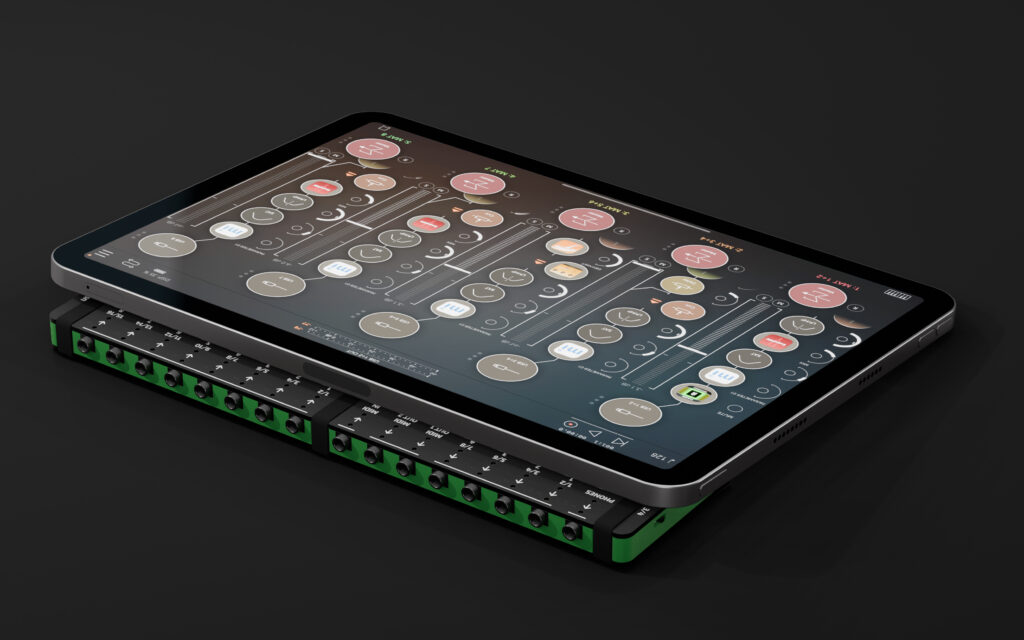
In conjunction with Audio Class 2.0 compliant tablet, phone or computer:
- A super flexible digital live performance mixer with effect chain and hardware send-return loops.
- Hybrid mixer for hardware devices, effets and virtual instruments.
- Studio multichannel interface.
- Multichannel loop station.
- Multitrack audio recorder.
- … or a combination of all of these.
-
Company founded
by
I am proud to announce the MAT Modular Audio Tools GmbH Another important step has taken place: with today the 14th of August 2024, the creation of a… Read more …
-
Beta testing
by
It has been a little quiet around the MAT 16X8 in the last few weeks. I had to take care of my actual job and couldn’t work on… Read more …
-
MPC test
by
I did a test with a MPC Live 2. Thanks to a friend, who kindly made his MPC available to me, I was able to test the MAT… Read more …
-
Design improvement
by
Maybe, I will probably stick to the current design and plan to manufacture the MAT 16X8 in the PCB sandwich construction. I am trying to reinforce the PCBs… Read more …
-
Eurorack compatibility
by
A lot of people are asking about Eurorack compatibility. Currently the MAT is designed for use with AUDIO SIGNAL levels and offers low noise and high dynamic range.… Read more …
-
Development progress
by
Some more Information: In the meantime, I have received a lot of feedback, requests and unanswered questions. I have therefore made the description on the main page a… Read more …
-
Superbooth 2024 impressions
by
Superbooth 2024 was a great event for me. I met a lot of people I only know from the internet. The world of electronic music comes together in… Read more …
-
Back from Superbooth 2024
by
We’ve just arrived back in Munich, pretty exhausted but very happy. The Superbooth was great, the MAT 16X8 attracted a lot of interest and I’m currently getting a… Read more …





